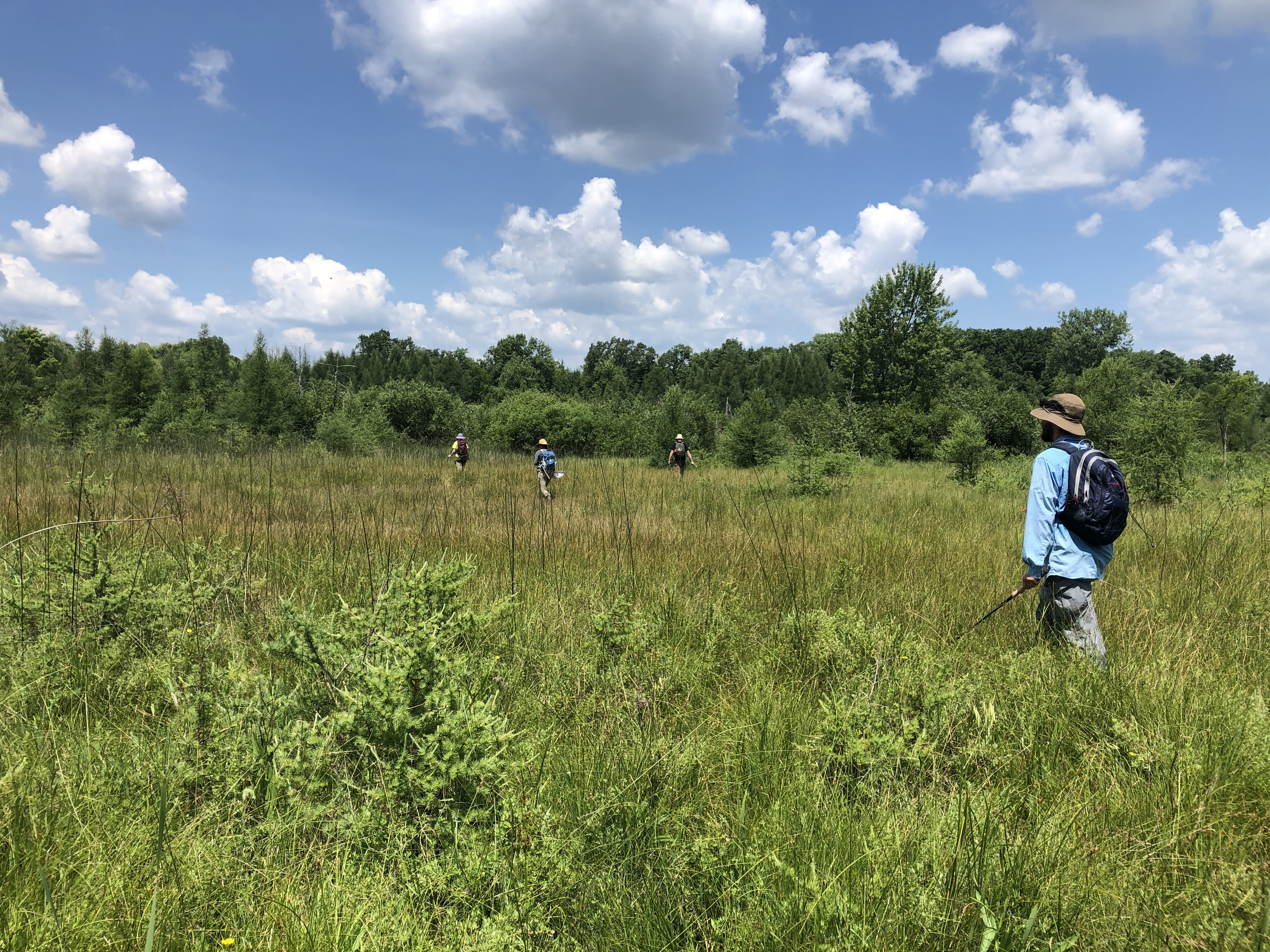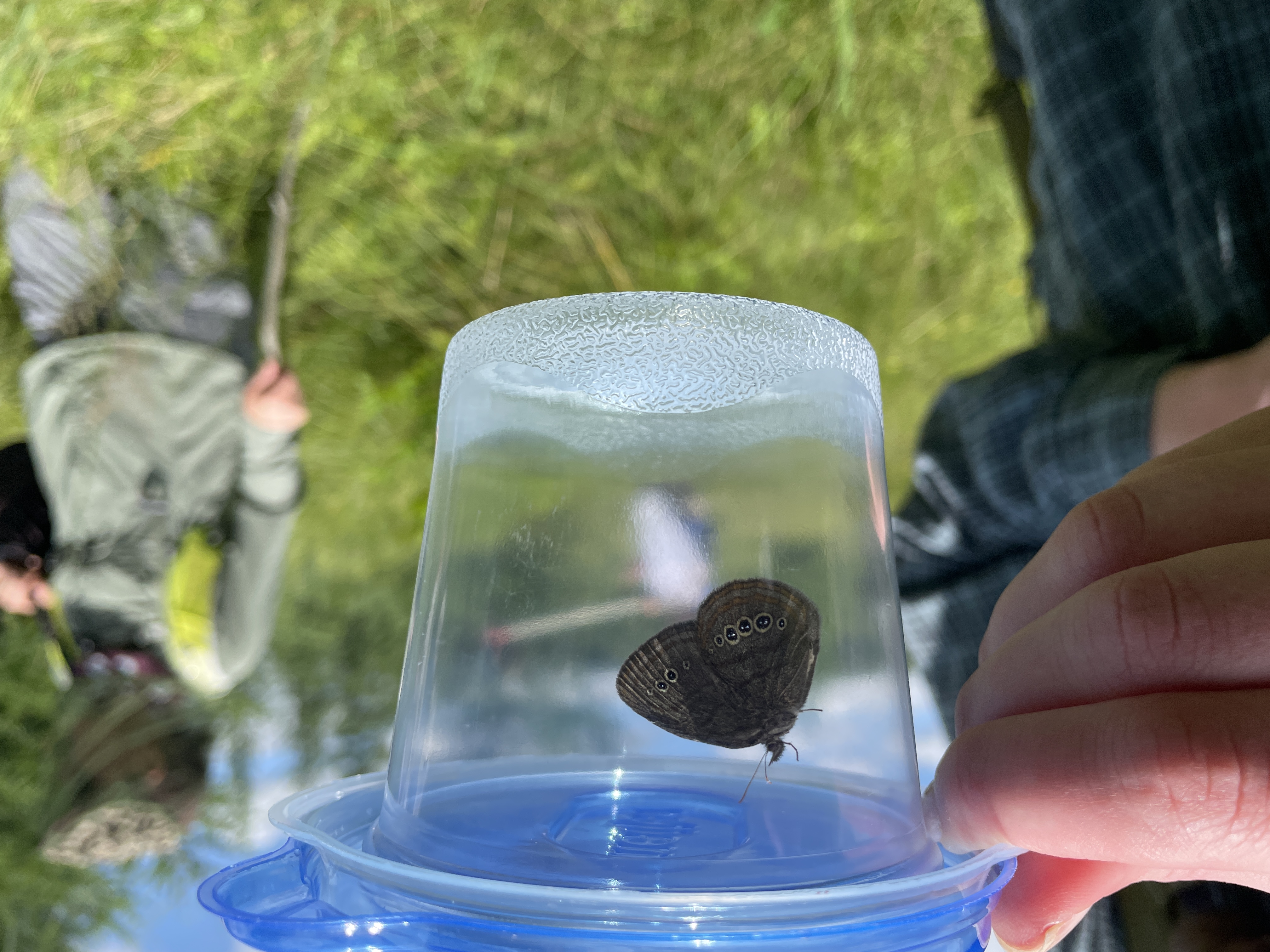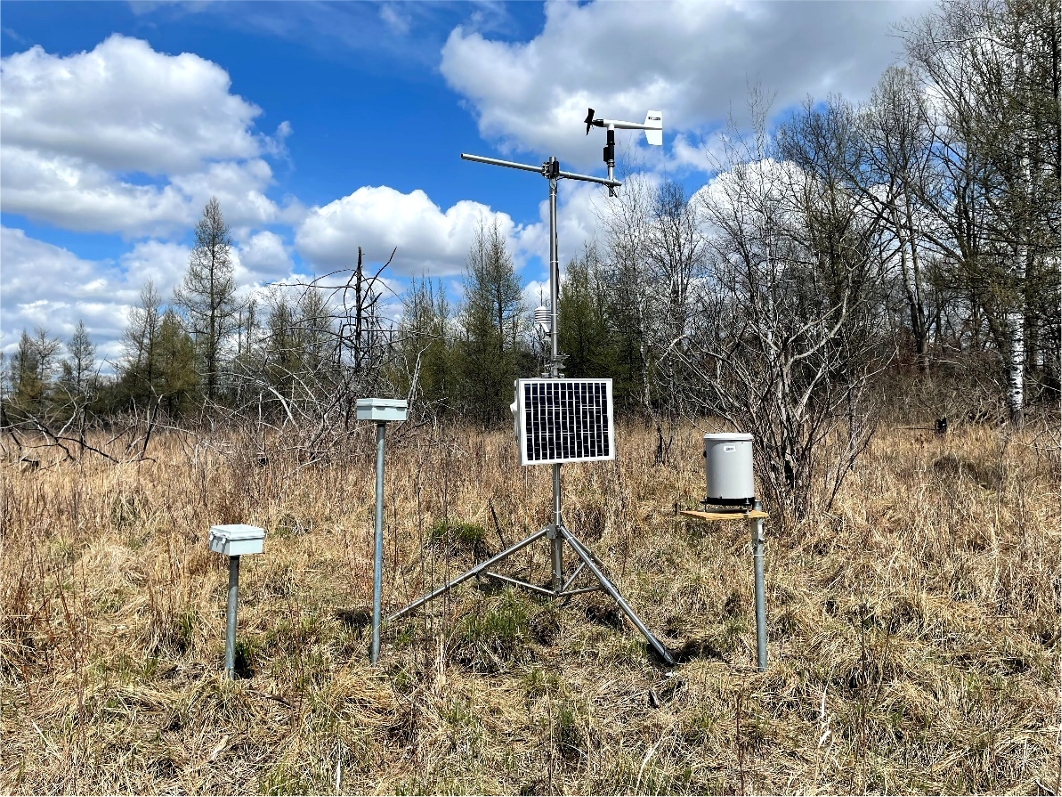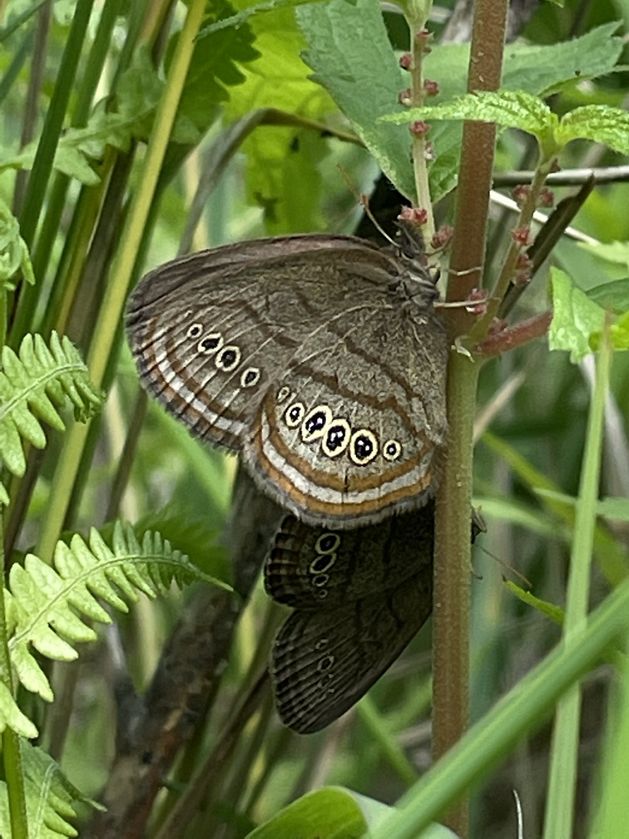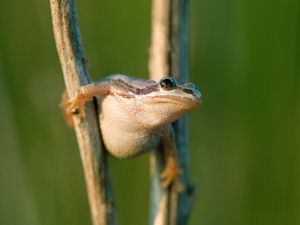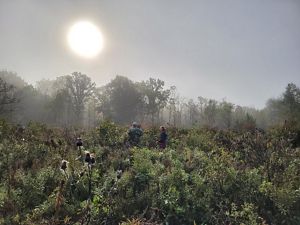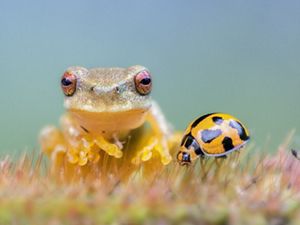Protecting Habitat for the Rare Mitchell's Satyr Butterfly
Organizations are working together to recover populations of the Mitchell's satyr butterfly and restore its globally-rare wetland habitat.
Flitting through the fens of southern Michigan and northern Indiana is a chocolate-brown butterfly known as the Mitchell's satyr. According to the U.S. Fish & Wildlife Service, it is historically found at 30 sites across Michigan, Indiana, Ohio, New Jersey and possibly Maryland. However, its numbers have since dwindled—making it one of the world's rarest butterflies.
Efforts are taking place across these states to protect this vanishing species. But why are conservationists focused on a butterfly with such a limited range? How does it impact the challenges facing our planet today? The answer is simple. Every species has an impact. This unassuming butterfly is a bellwether for the health of wetland habitats.
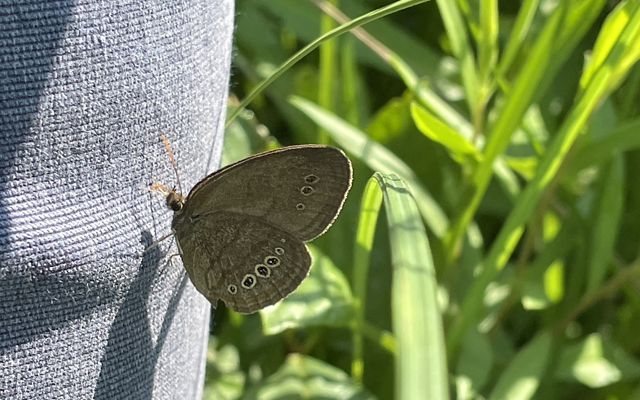
Facts About Mitchell's Satyr
- Scientific Name: Neonympha mitchellii mitchellii
- Family: Nymphalidae
- Conservation Status: Endangered
- Habitat: Prairie fen complexes
- Lifecycle: Adults live two to three weeks
What is the Mitchell's satyr butterfly?
A medium-sized butterfly, the Mitchell's satyr's wingspan ranges from 1.5 to 1.75 inches (3.8-4.4 cm). While its wings are primarily chocolate brown, a row of closely spaced, yellow-ringed black eyespots with a dot in the center differentiates them from other species. The wing's eye spots are encircled by two colorful orange bands.
Mitchell's satyr are usually active for two to three weeks in June to July. During this time, they mate, lay eggs and die. Their eggs are laid on tiny flower and fern seedlings growing close to the saturated peaty soil, under a dense canopy of sedges, where they stay for about a week before hatching into caterpillars. They remain in this stage throughout the year, hibernating under the snow during the winter and snacking on the sedges that dominate their habitat. As spring approaches, from late May to late June, they form a chrysalis and stay in that form for 10 to 15 days. At that time, they emerge and finally spread their wings.

What are the threats to the Mitchell's satyr?
Like many species classified as threatened or endangered, habitat loss impacts the Mitchell's satyr population. The butterfly resides in a natural community known as a prairie fen—wetlands fed by groundwater and occurring in areas scoured by glaciers. Covered by grasses, sedges, rushes and wildflowers, healthy fens are an abundant food source for the species. The butterflies are also occasionally found in the natural communities associated with prairie fens—like tamarack swamps and sedge meadows.
Species Range
The U.S. Fish and Wildlife Service reports that the species range is now limited to nine sites in southern Michigan, one in Indiana, a single county in Virginia, as well as small areas within both Mississippi and Alabama.
Unfortunately, prairie fens are disappearing. These wetland complexes are drained for agriculture or development. Nutrients and pesticides from adjacent farmland and home sites encourage invasive species encroachment into butterfly habitat and stress insects in the fen. The wetland relies on natural landscape processes—like wildfires and flooding from beaver activity—to maintain a viable habitat for the Mitchell's satyr. Some of the sites where the species was once recorded, are no longer considered viable habitats to support the butterfly's population due to issues with wetland health.
Protecting and Restoring Prairie Fens
TNC uses a variety of land management tools to protect and restore prairie fens. The Mitchell's satyr thrives on plants found in this rare habitat. But over time, an abundance of invasive shrubs and trees began to crowd out native species. Restoration managers use both mechanical and chemical methods to remove unwanted species. They've also brought the regenerative power of fire back to the land.
Prairie fens rely on natural disturbances—such as fire—to help maintain the plant communities the Mitchell's satyr relies on. Reintroducing fire at preserves, such as Grand River Fen, allows native plants like swamp milkweed and tuberous Indian plantain to rebound, helping the butterflies that feed on these plants.
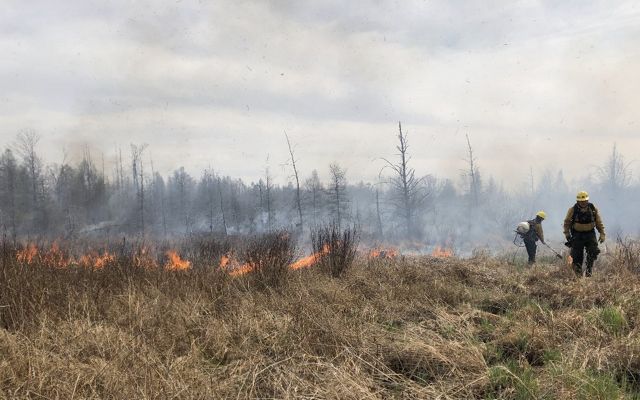
Help Protect the Fen
If you plan on visiting Grand River Fen Preserve, help protect this species and its habitat by staying on the designated path. Visit the preserve page to find information on the trail, parking and the other species you might encounter. Visit Grand River Fen
A Bellwether for Wetland Health
Established in 1996 with a 131-acre purchase, TNC’s Grand River Fen Preserve covers 453 acres of high-quality prairie fen and wetland communities. Located in Jackson, Michigan, it is of high ecological significance and is a pivotal link to protect and restore a landscape mosaic of ecological systems. The preserve contains the second largest high-quality occurrence of cinquefoil-sedge fen in the North Central Tillplain Ecoregion, making it a critical habitat for special insects, including one of the largest populations of Mitchell's satyr in the world.
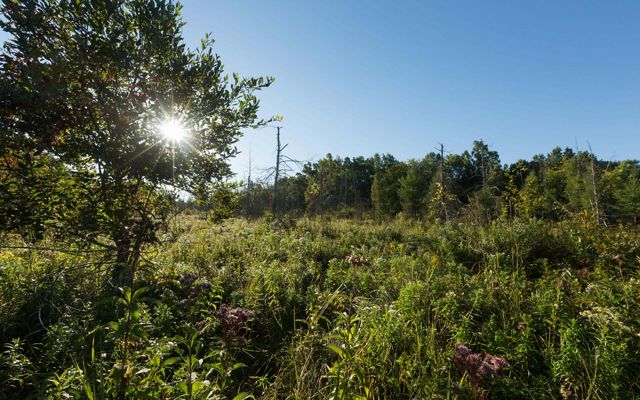
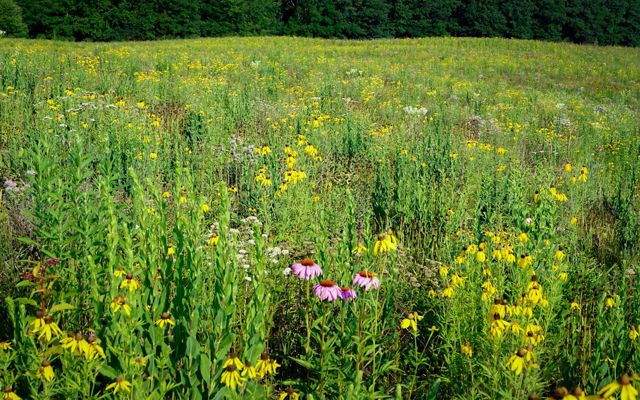
What does the Mitchell's satyr eat?
The larvae eat a variety of sedges, so it's important their habitat is healthy and growing an abundance of native plants.
The presence of this butterfly says a lot about the health of Grand River Fen. The Mitchell's satyr is a bellwether for the quality of a wetland. Changes to the butterfly's population can indicate a change in the habitat. So why does this matter? Mitchell's satyr are part of a larger ecosystem. Fens are full of a variety of plants and wildlife. The Grand River Fen is also home to other insects like the blazing star borer, tamarack tree cricket, pine tree cricket, regal fern borer, angular spittlebug and red-legged spittlebug. One globally-rare plant, the bog bluegrass, is also found here, as well as a very high diversity of flowering plants, sedges and grasses. Efforts to protect the Mitchell's satyr habitat have a ripple effect felt by all species living in the fen.
Prairie Fen Species
When we protect prairie fens for the Mitchell satyr, we also protect them for snakes, turtles, insects and abundant plant life.
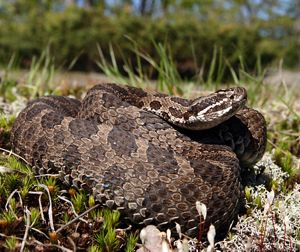
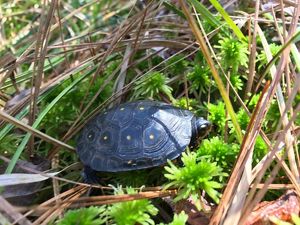

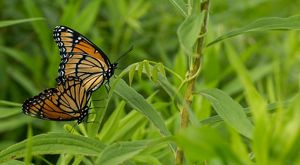

Eastern Massasauga: The eastern massasauga is a rare wetland species. © Ryan M. Bolton/Shutterstock.com

Spotted Turtle: This rare turtle only appears along the east coast and in the Great Lakes region. © Chase McLean/TNC

Lady's Slipper: This species needs direct sunlight and begins to disappear if an area has too much shade. © TJ Vissing

Monarch Butterflies: Fens are home to a variety of butterfly species. © TNC
Mitchell's Satyr Recovery Plan
TNC’s Grand River Fen Preserve has one of the largest remaining populations of the endangered Mitchell’s satyr in the Midwest—and our partners are helping it grow. Led by the U.S. Fish and Wildlife Service, a consortium of federal officials, state wildlife agencies, land conservancies like TNC and zoos are leading the effort to recover the butterfly's population.

